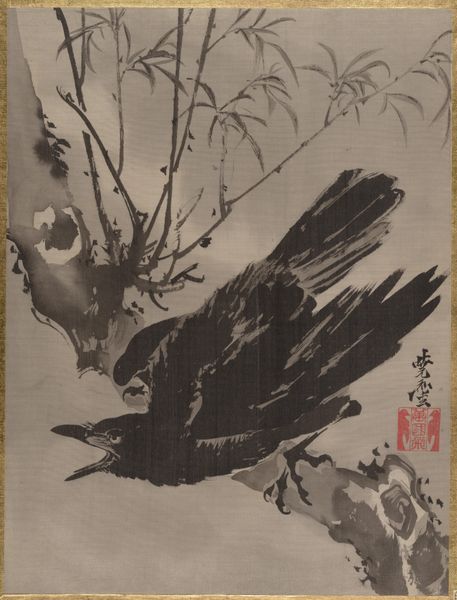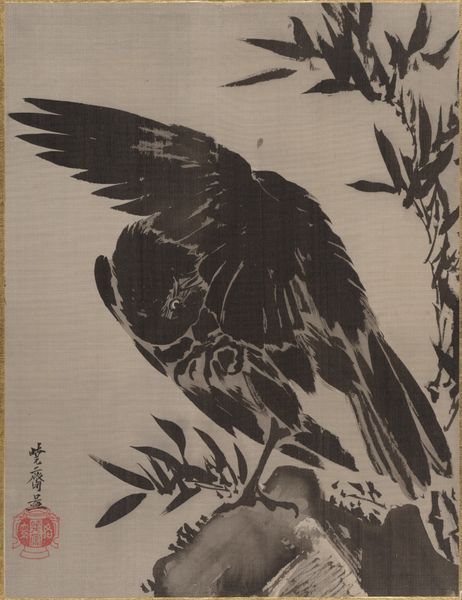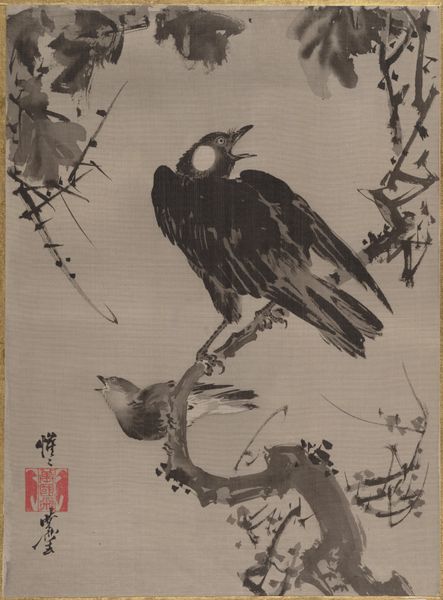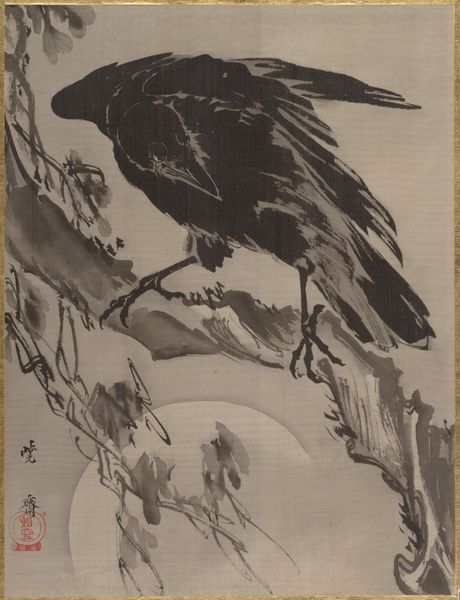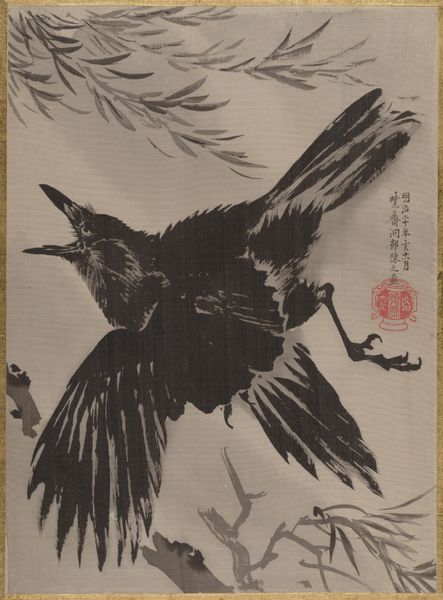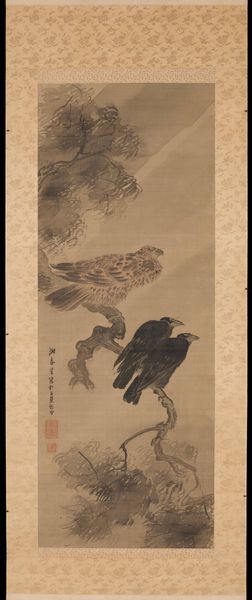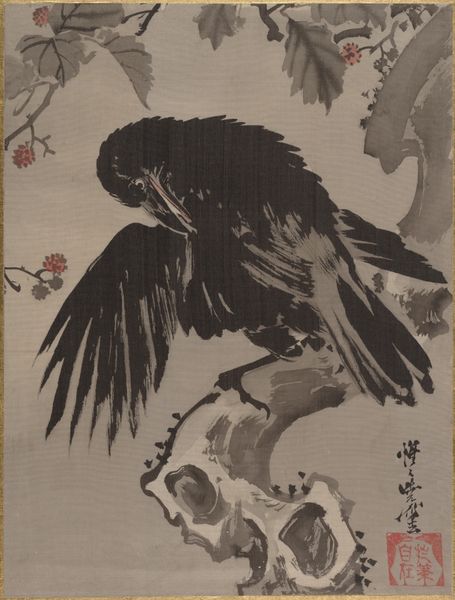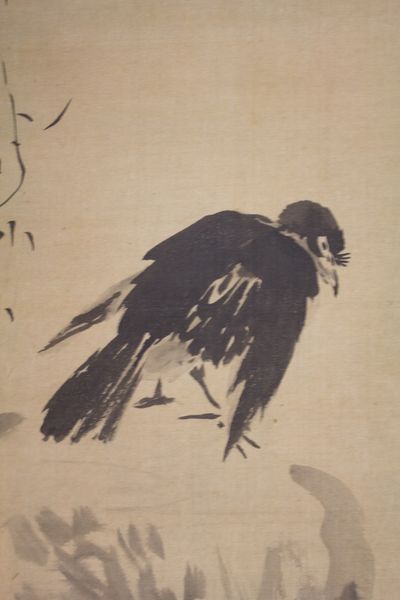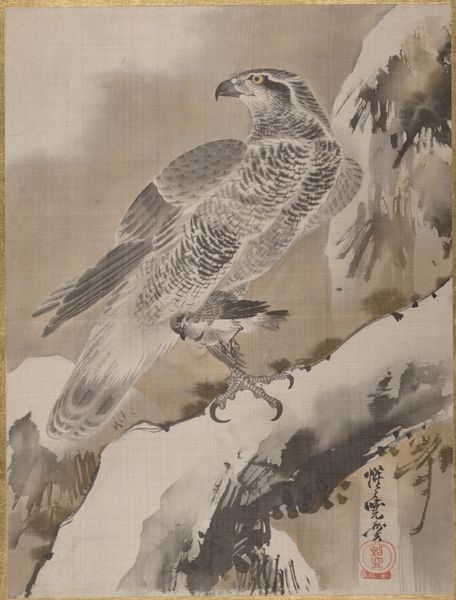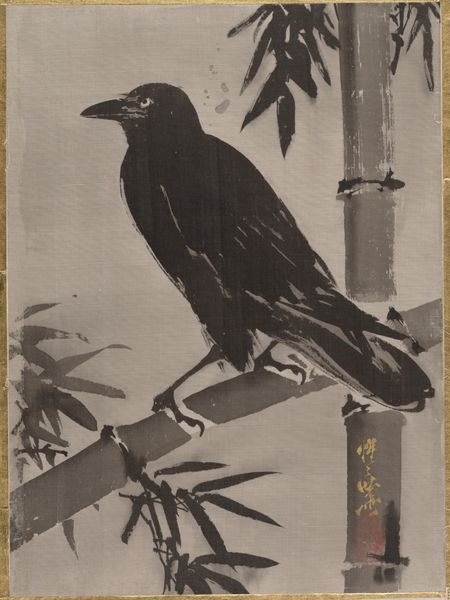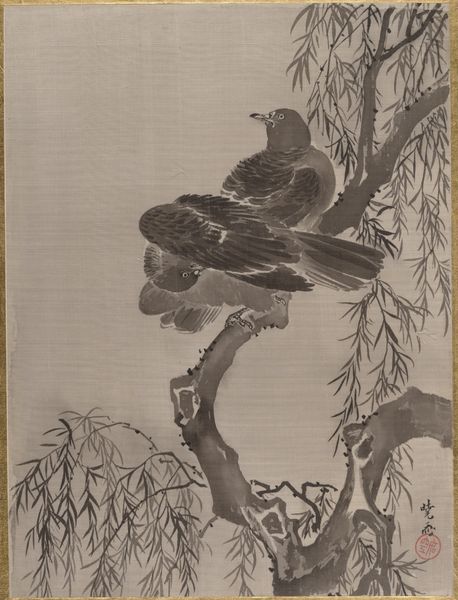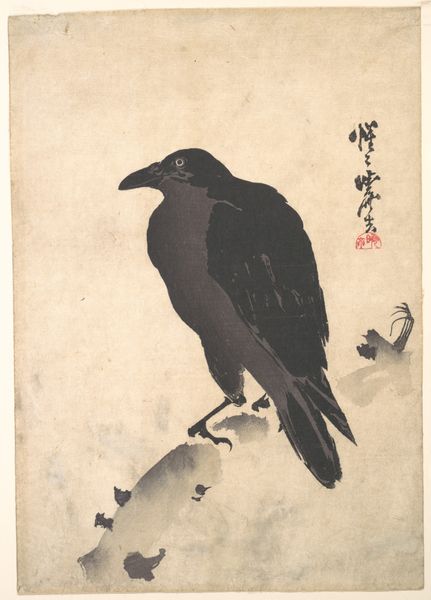
drawing, ink
#
drawing
#
ink painting
#
impressionism
#
asian-art
#
landscape
#
bird
#
ink
Dimensions: 14 5/16 x 10 3/4 in. (36.4 x 27.3 cm)
Copyright: Public Domain
Editor: So, here we have Kawanabe Kyōsai's "Two Crows on a Pine Branch," likely created between 1877 and 1897, using ink. There’s something almost confrontational in the crows’ gaze; they seem to challenge the viewer. How do you interpret this work? Curator: What immediately strikes me is how these crows, typically harbingers of change and disruption, perch upon a pine – a symbol of longevity and steadfastness. What tensions might this juxtaposition reveal about Meiji-era Japan? The rapid Westernization was perceived by some as a threat to traditional Japanese identity. Could these crows embody that unease? Editor: That's interesting. I hadn't thought about it that way. I was just focused on the rather bold and stark nature of the ink work. Curator: Exactly. And notice how the boldness also defies the delicate aesthetics often associated with traditional Japanese art. Think about how Kyōsai used his art to critique power. Do you see these crows as passively observing, or actively judging? Editor: Hmm… judging, maybe? Especially given the directness of their stares. It feels like more than just observation. Curator: Consider also the social implications of portraying such a common bird so prominently. It challenges traditional artistic hierarchies that favored noble or aesthetically "pleasing" subjects. Kyōsai, known for his rebellious spirit, frequently used folklore and common imagery to challenge the elite. What’s stopping us from seeing this piece as a subversive act, cloaked in traditional form? Editor: That makes the image much more powerful. I see the crows now less as just birds and more as symbols of dissent. Curator: Indeed. By bringing together symbols and historical context we reveal a layered understanding that helps us relate artworks such as this to complex ideas about gender, class, race, and cultural identity, past and present. Editor: I'll never look at crows the same way again! Thank you for highlighting that crucial aspect.
Comments
No comments
Be the first to comment and join the conversation on the ultimate creative platform.
